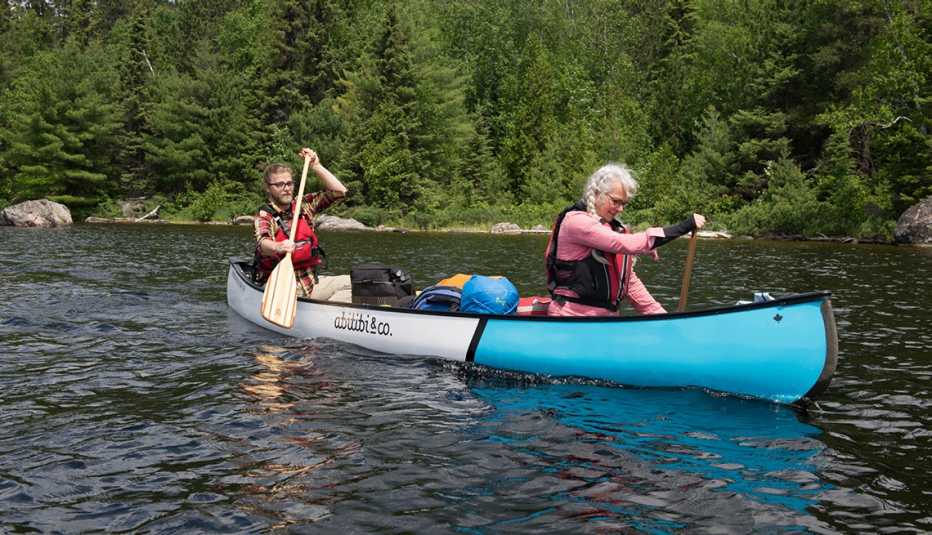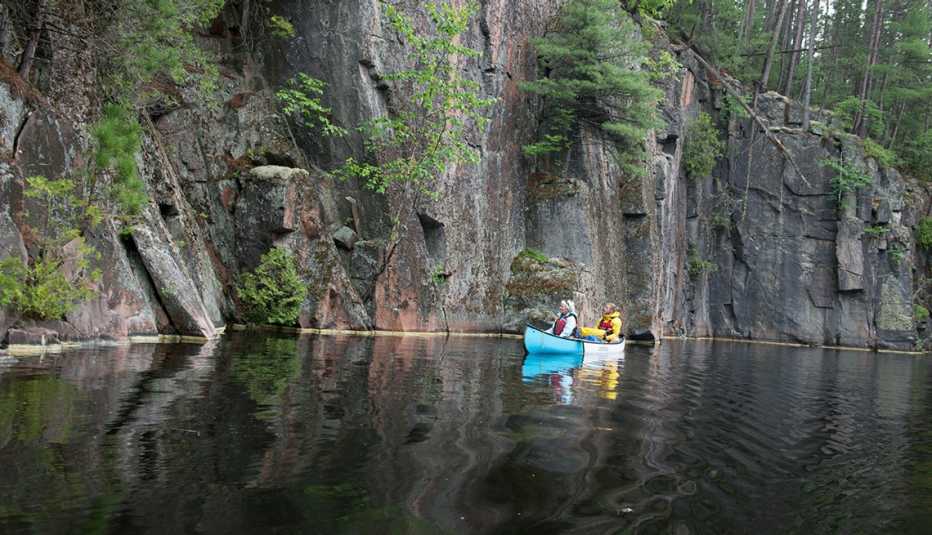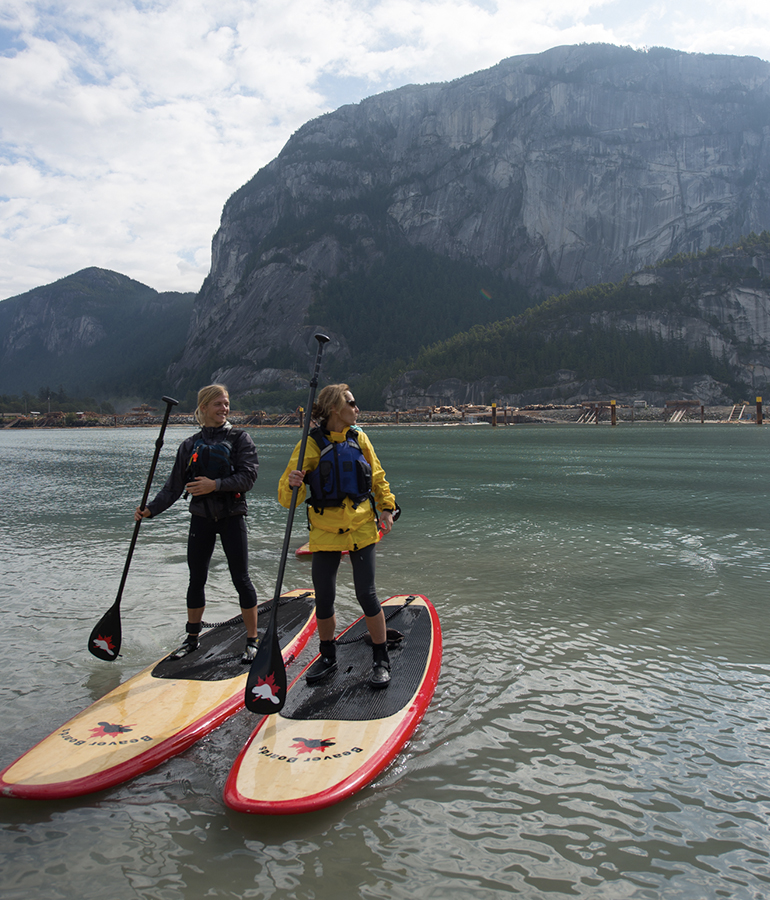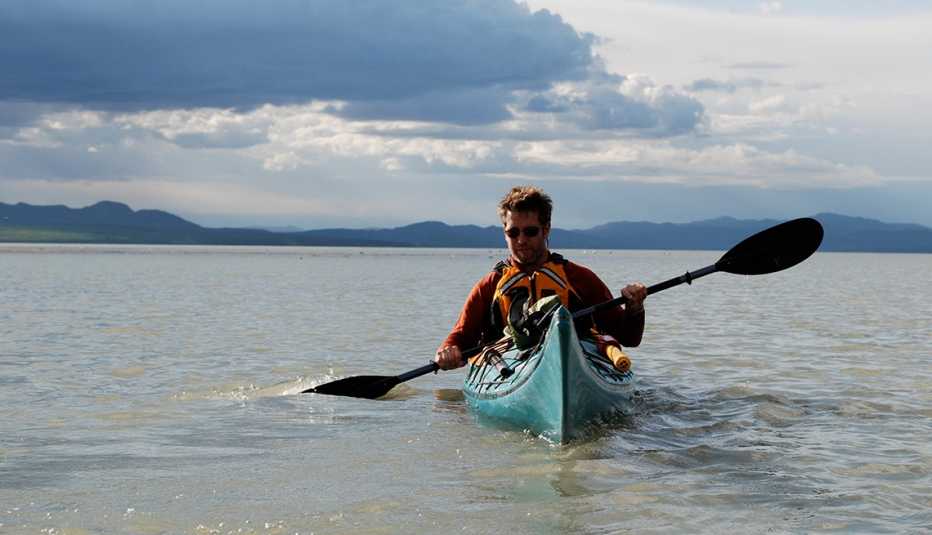Staying Fit


A canoeist’s J-stroke carves perfect whirlpools in its wake. A kayak slides effortlessly through a gentle surf. A paddleboard slips this way and that like a water beetle. Paddling, among all our human-powered outdoor activities, may best evoke the idea of peaceful places. But it offers much more.
For one, it’s exercise that is adaptable to all skill and comfort levels. Wedging into a kayak for more than a couple of hours is tough on my knees these days, but a “sit on top” kayak allows me to shift my position frequently to remain comfortable and stay out on the water longer. Stand-up paddleboarding (also called “supping”) can be challenging to your balance, although the wider boards now being made offer more stability, even if they glide a bit more slowly through the water.
Because I’ve lived close to the Canadian border for much of my life, I’ve been fortunate to experience much of the country with a paddle in my hands. Paddling is an especially fitting way to explore, because water travel played such a pivotal role in Canada’s Indigenous and explorer culture. What follows are a few of my own voyageur experiences, from Québec to the Yukon. I hope they will inspire healthy paddles of your own — whether in Canada or closer to your own pond.


A multiday canoe expedition in Québec
I first met Diane Moreau in 2017 in Abitibi-Témiscamingue, a region in western Québec about 185 miles north of Ottawa, where she was part of a four-day canoe trip I joined on Lake Kipawa. She had recently celebrated her 50th birthday by paddling from Montréal, Québec, to Winnipeg, Manitoba, a trip of well over a thousand miles. Her love of paddling was infectious, and after my first day exploring the lake, I understood why. Lake Kipawa is a labyrinthine series of bays and narrows defined by scores of islands and pink granite rock outcroppings. Navigating it is like paddling within an aquatic jigsaw puzzle, a ton of fun if you know where you’re heading. Fortunately, our excursion leader, France Lemire, had created an app that mapped the entire 116-square-mile lake, from campsites to hidden coves. We were in good hands.
A multiday canoe excursion that covers a relatively short distance allows for plenty of time to take breaks from paddling for islet lunches. True, we did paddle hard to sneak under shelter during two thunderstorms, brief tempests that presented a stage of spectacular sky, but for the most part, canoeing’s sublime pace lent itself to plenty of pauses to relax.
The preponderance of bays also produced a series of wonderful French names, my favorite being Baie des Plongeurs, or Bay of Divers. “Diver” is the English term for loon, that wonderful, solidly boned, relatively ancient summer denizen of northern lakes. (The plaintive call of the loon on an eastern lake remains high on the list of things I miss most about “back east” since I transplanted to America’s West Coast.) This particular bay proved well named, as several common loons serenaded the sunset come evening.
Our group spent days traveling from bay to bay, often in tight channels shouldered by granite walls that, had Lemire not charted over 750 miles of shoreline, we surely would have missed. Not only had she identified the campsites, she had graded them. We slept in accommodations that she judged A-plus, on beds of soft balsam fir needles.
Lake Kipawa borders our final destination for this trip, Québec’s Parc National d’Opémican, which was created in 2013 to preserve the rich biodiversity in the area. Thirty-five miles from our put-in, we stowed our gorgeous, locally crafted Abitibi & Co. canoes and celebrated our voyage over pints of Québec’s famous blonde ale.





































































More Members Only Access